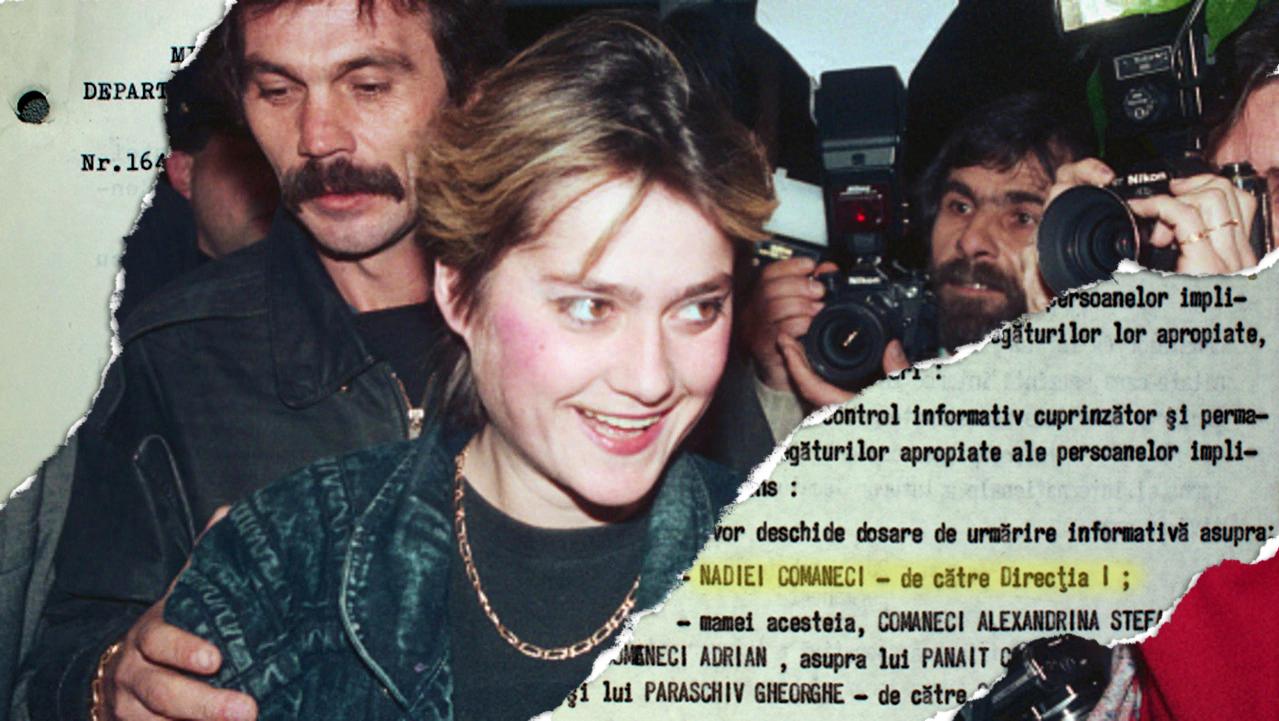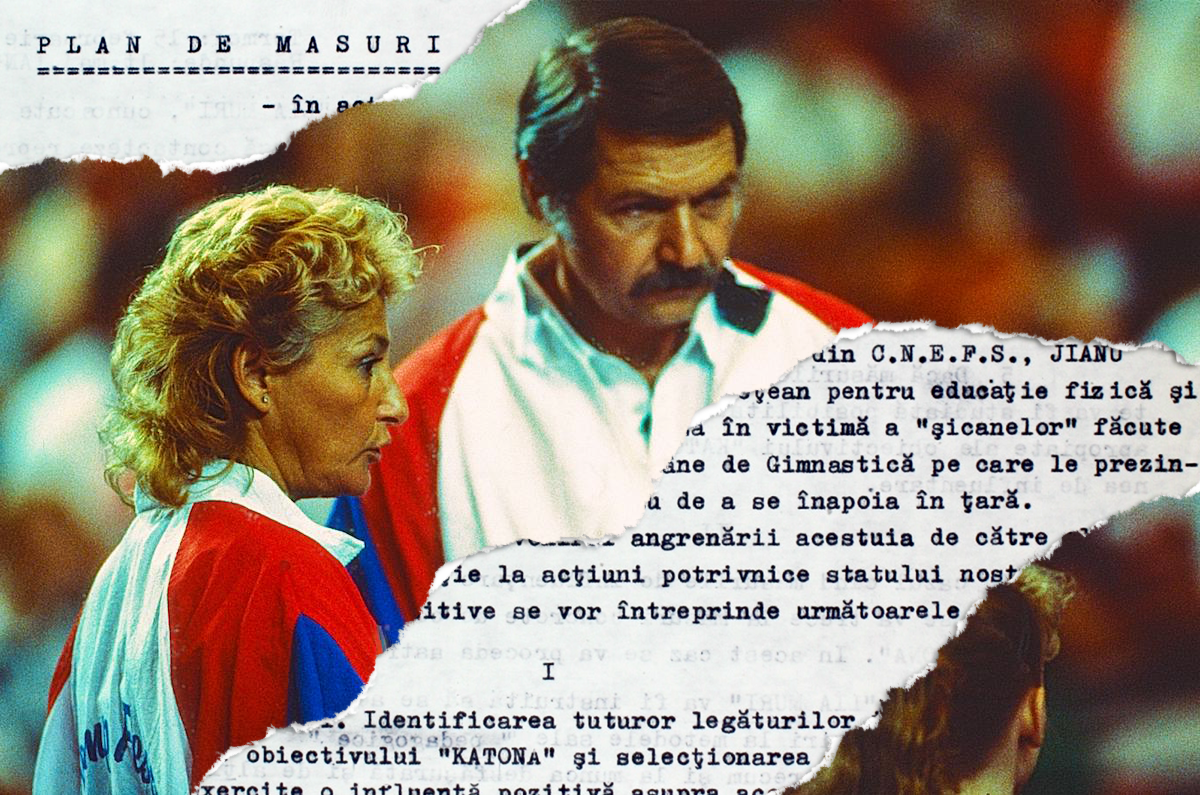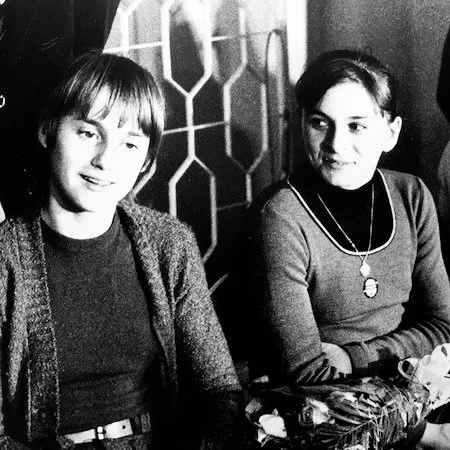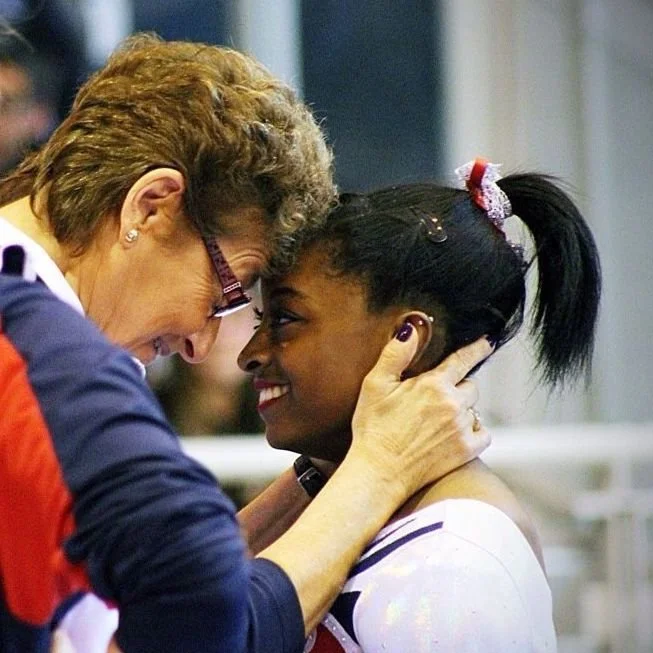The Secrets
Nadia Comaneci was just 14 years old when she became an Olympic Champion. She immediately became “propaganda gold” for Romanian dictator Nicolae Ceaucescu. Under the guise of protecting her, Romania’s secret police, the “Securitate”, spied on her every move – hiding microphones throughout her house, tapping her phone, taking surveillance photos and controlling the people around her. There was no one she could trust and nowhere for her to go.
“…bugging her house, tapping her phone…and controlling the people around her.”
Newly-released Securitate files unveil a world of abuse far greater and more nefarious than previously known. We now know that Nadia’s coaches, Bela and Martha Karolyi, were glorified child abusers – they used physical beatings, starvation and verbal abuse tactics to control their athletes. All the while, an intricate network of informants spied on the Karolyi’s, knew about the abuse, and did nothing – enabling their system to flourish.
Securitate reports describe Bela’s abuse: “[BELA KAROLYI] used to hit the gymnasts on the head when they were executing something wrong…in order to prevent ‘stardom,’ he subjected the children to a very severe regime. Very little food and restrictive physical preparation…Nadia ran away from the training camp.”
As a teenager, Nadia continuously tried to escape the system that held her hostage – first she refused to train, then tried to flee from the gymnastics training center and later even attempted suicide. In every instance, her actions were covered up, ignored, disregarded and even punished as she was forced to continue competing and representing her country on the international stage.
The Escape
Years later, both the Karolyis and Nadia defected to the United States but their contrasting experiences are emblematic of their lives behind the Iron Curtain – one a more facile exit, the other a life-threatening struggle.
In 1981, while touring with Nadia in the United States, the Karolyis took their acquired wealth, much of it earned off Nadia’s success, and slipped out of sight. They left their prized pupil behind at the mercy of the regime – and Nadia paid the price. The Romanian dictatorship subsequently restricted Nadia’s ability to travel, eventually cutting her off altogether. She spent much of her time living in an apartment monitored by the Securitate and working at a government-subsidized job – the wealth accumulated from her achievements never trickled down to Nadia.
“in order to…to counteract and neutralize the attempts to involve her in such actions…follow-up files will be opened on Nadia Comaneci...”
Despite the best efforts of state security, Nadia eventually escaped to the West with the aid of Constantin Panait (l).
Nadia endured this purgatory for eight years until she finally gathered the courage to attempt an escape. Unable to officially leave the country, Nadia made the gutsy decision to cross the border by foot. Walking for six desperate hours through the night, careful to avoid armed guards and barbed wire, she eventually crossed the Hungarian border, only to have to repeat the same experience the very next night, this time crossing the Austrian border. After two harrowing nights, she walked into the U.S. Embassy in Vienna and requested asylum.
The Cost
After defecting, the Karolyis benefited from a certain celebrity that came from coaching the legendary Nadia Comaneci – and they used that prestige to rewrite their story.
Bela claimed he discovered Nadia on a playground – he took sole credit for shaping her into the athlete she had become, making no mention of the barbaric tactics he exacted upon his protégé. His gregarious, larger-than-life personality tied a bow around his fake story and endeared him to the American public. As his stature in the U.S. grew, he became emboldened, and resorted to his established tactics of physical and emotional abuse to control his athletes.
Documents reveal that the Securitate began actively blackmailing the Karolyis. They were prepared to divulge the truth about the Karolyis and destroy their careers in the States, but only if Bela and Martha spoke out against the Romanian dictatorship. When the Karolyis kept their mouths shut, the secret files remained locked up – and the truth was never revealed.
For Nadia, defecting to the West did not initially provide relief from the isolation and abuse that she had endured for most of her life. The man who helped her defect allegedly held her captive in the States for the better part of a year: moving her against her will from state-to-state, controlling her public appearances and extorting money from her. Eventually Nadia escaped that abusive relationship and set out to rebuild her life in Oklahoma.
Once Nadia was truly free, it is rumored that she and Bela made a pact to leave the past behind: Nadia would not dispute Bela’s version of the truth and in turn, Nadia could leave her traumatic childhood in the past. However, as Bela ages, Nadia has become more emboldened to share her truth – working quietly behind-the-scenes with Romania author, Stej Olaru, on his new book: Nadia and the Securitate.
The Impact
Almost 50 years after Nadia Comaneci made Olympic history, the culture of secrecy and abuse in gymnastics was finally exposed when hundreds of survivors spoke out against their abuser, Larry Nassar. The scandal at USA Gymnastics became a microcosm of a larger societal movement that was beginning to take shape – #MeToo.
USA Gymnastics was just the first national governing body to fall from grace. Since then France, Canada, England, Mexico, Switzerland, Romania and the Netherlands have all been forced to reckon with their own cultures of abuse as hundreds of gymnasts around the world come forward to speak their truth.
In this light, we are now able to look back on Nadia’s story with a renewed perspective…
She is the original gymnastics superstar. Her story is one of sacrifice, endurance and success despite the odds…but the truth behind her legacy is a cautionary tale guarded by 50 years of secrets…secrets uncovered through hundreds of newly-revealed Securitate files. This film will finally tell the full truth behind Nadia’s story, drawing upon exclusive access to those Securitate files and interviews with former teammates, members of her elite coaching staff and past informants.
In order to move forward, the truth must first be revealed…
The Voices
Teodora Ungureanu — Teodora was Nadia's friend and closest training partner. They spent their teenage years as roommates and teammates. They experienced their greatest athletic accomplishments together – and they both suffered from Karolyi's abuse. Both women eventually defected to the U.S.
Geza Pozsar — Nadia's longtime choreographer and the Karolyi's closest colleague. During most training sessions, Geza was the only other adult allowed in the gym; often making him the sole witness to the Karolyi's abuse. Geza was also the Securitate's number one informer. Using the code name "Nelu", Pozsar sent weekly, handwritten letters to the Securitate for years.
Mary Lou Retton — Mary Lou is the 1984 Olympic All-Around Champion and the first American protege of Bela and Martha Karolyi, following their defection. Her success solidified the Karolyi's status as elite coaches in the States and ushered in a new era of popularity for the sport.
Dominique Moceanu — Dominique is the youngest member of the "Magnificent Seven" – the 1996 Olympic gold medal-winning team. The Karolyis began training her as a young child – allegedly using many of the same abusive tactics they wielded on Nadia. Dominique later became the first official whistleblower to publicly call out the Karolyis abuse.
Simone Biles — Simone is the most decorated gymnast in the history of the sport. She was a member of the final generation of Martha Karolyis athletes and has spoken publicly about the emotional abuse she and her teammates endured. In 2018, Biles confirmed she is also a survivor in the Larry Nassar abuse scandal.
Dr. Stejarel Olaru — Olaru is a Romanian historian, former National Security Advisor and author of the book, “Nadia and the Securitate”. He has published several books on the history of the Romanian intelligence services. Olaru is one of a few people to have first-hand access to the Securitate’s secret files and has spent year’s decoding the truth behind Nadia’s success.
Iron Will: A Series
Nadia’s story of survival and eventual escape from behind the Iron Curtain is just one of many. While we feel this film has the potential to stand on its own, we are also interested in the possibility of telling it in tandem with other Iron Curtain “true crime” stories. Our research has uncovered a collection of stories that deserve to be told – stories that all share the common Cold War themes of mystery, intrigue and sacrifice.
For many young men and women pursuing their dreams inside communist regimes, the notion of sacrifice took on a far greater meaning. Those who tried to escape all sacrificed – some left their family behind, others endured bodily harm and some lost their lives. They lived the lives of spies – contending with secret police surveillance, tortuous interrogations and the constant threat of discovery.
Here are some of their stories outlined over five episodes…
The Creators
Katie Walsh — Katie Walsh is a Peabody and 4-time Emmy-award winning director and producer with a focus on women’s sports stories. Katie spent two years documenting Simone Biles journey to the 2021 Tokyo Olympics in a seven-part series titled, Simone vs Herself. She had exclusive access to Simone and her family after Simone withdrew from the Olympics to prioritize her mental health. Katie directed the first film about the survivors in the Larry Nassar abuse case; the film headlined the 2018 ESPY Awards and won a Peabody Award for outstanding journalism. Katie’s work has also been featured on ESPN’s 30 for 30 series, HBO, Disney+, NBC and ABC. She has profiled athletes for two Super Bowls and five Olympic Games.
Jessica O’Beirne — Jessica is the founder of GymCastic, the No. 1 gymnastics podcast in the world, which during the 2020 Olympic Games was ranked among the top 25 of all sports podcasts by Apple Podcasts. Jessica was the first to uncover a lawsuit against USA Gymnastics national team doctor Larry Nassar, and passed the information to The Indianapolis Star, which then ran a groundbreaking exposé that ended by unmasking Nassar as the biggest pedophile in the history of sports. Jessica was called “the most influential voice in gymnastics journalism” by Vanity Fair. She has written for the Los Angeles Times, The Huffington Post and International Gymnast Magazine. Her expertise has been quoted in every media outlet from NPR to The New York Times, and ESPN.
Adam Castaldo — Adam Castaldo is an Emmy-nominated producer and editor with a focus on documentary filmmaking. He recently collaborated on the film God Forbid; the most watched documentary in Hulu’s history. Adam’s work has also been featured on CBS Sports, HBO, Showtime, ESPN, and TIME.















